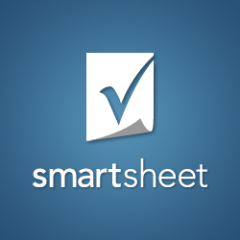
In today’s digital era, organizations continually seek effective solutions to streamline project management processes. One tool that has gained significant traction in recent years is Smartsheet. Known for its versatility and spreadsheet-like interface, Smartsheet bridges the gap between traditional spreadsheets and complex project management software. In this article, we delve deep into the features, benefits, and applications of Smartsheet as a project management tool.
Introduction to Smartsheet
Smartsheet is a software as a service (SaaS) platform designed to enable collaboration and work management. At its core, it takes the familiar spreadsheet format and elevates it with project management functionalities, making it user-friendly for those accustomed to programs like Microsoft Excel.
Key Features of Smartsheet
- Grid View: The default view that looks like a traditional spreadsheet, allowing for easy data entry, sorting, and filtering.
- Card View: This view allows tasks to be presented as cards (akin to Trello), making it suitable for Kanban or Agile methodologies.
- Gantt Chart View: Visualize project timelines, dependencies, and milestones. Adjust timelines easily with drag-and-drop functionality.
- Calendar View: A visual representation of tasks based on due dates. Integrates well with popular calendar apps.
- Forms: Customize and embed forms to gather information, which then can be directly populated into a Smartsheet grid.
- Automation: Create workflows that automate repetitive processes like reminders, updates, or approvals.
- Reports: Generate detailed reports based on specific criteria, ensuring stakeholders remain informed.
- Collaboration Tools: Multiple team members can work on a sheet simultaneously, with discussions, attachments, and row-level sharing capabilities.
- Integrations: Smartsheet seamlessly integrates with a plethora of other tools such as Slack, Trello, Microsoft Teams, and Google Workspace.
Benefits of Using Smartsheet
- Intuitiveness: Its spreadsheet-like interface ensures a low learning curve, especially for those already familiar with Excel.
- Flexibility: Suits a variety of project management methodologies, from traditional to agile.
- Scalability: From small teams to large enterprises, Smartsheet’s features cater to projects of all sizes.
- Enhanced Collaboration: Real-time updates, comments, and row-level permissions enhance team coordination.
- Security: Enterprise-grade security features, including encryption, authentication, and compliance standards.
Potential Drawbacks
- Complexity for Larger Projects: As projects grow in complexity, users may find the spreadsheet format limiting, especially when compared to more specialized project management tools.
- Cost: For small teams or individual users, the subscription cost might be a consideration.
Summary
Smartsheet successfully marries the simplicity of spreadsheets with the robust capabilities of a comprehensive project management tool. While it may not be tailored for specific methodologies or extremely complex projects, its versatility makes it a popular choice for a wide range of businesses and project types.
As with any tool, the key lies in understanding the specific needs of the organization and determining if Smartsheet aligns with those requirements. If a team values a familiar interface, flexibility, and a tool that can grow with their needs, then Smartsheet is undoubtedly worth considering.